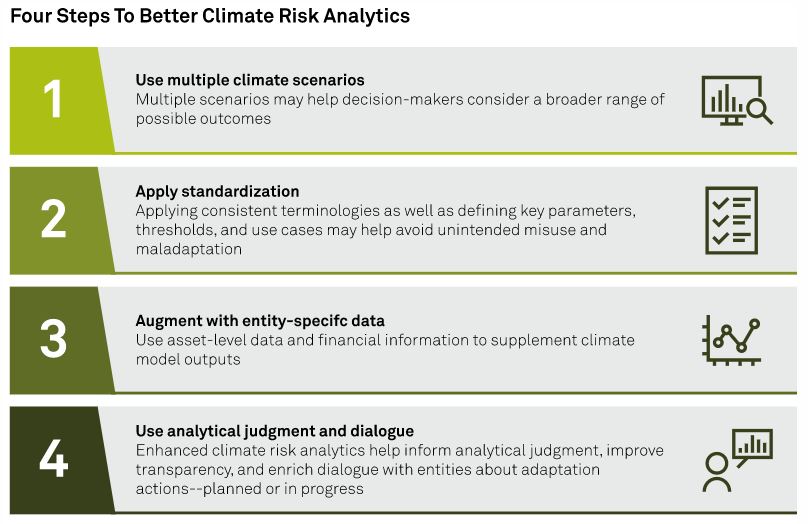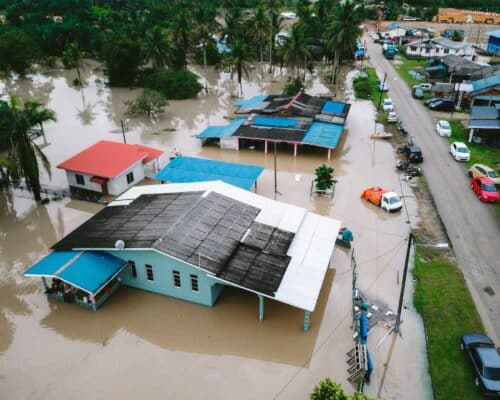Why Corporate Credit Ratings Agencies Shy Away From Climate Risks: An Interview with Melissa Brown, IEEFA
Alpha Stock Images - http://alphastockimages.com/
14 September 2021 – by Ankush Kumar Comments (0)
It is still a mistake to assume that the leading firms will change their ratings methodology to give investors more insightful credit research on climate risks, says Melissa Brown, Director, Energy Finance Studies, Asia at Institute for Energy Economics and Financial Analysis (IEEFA). In a Q&A with ETA, she also talks about the trend in the credit-rating market and how corporate credit ratings agencies evaluate climate risks.
Brown is a former securities analyst at JP Morgan and Citigroup. Over the past 20 years, she has played a leading role in various Asian investment organisations focused on mainstream and sustainable investment strategies for public and private equity investors.
ETA: In the recent past, corporate credit ratings agencies have paid more attention to ESG factors. Do you think these factors can directly influence their ratings methodologies?
In general, the ratings provided by the leading corporate credit ratings agencies focus on ESG only to the extent that they believe ESG factors may affect an issuer’s solvency. The traditional credit ratings’ methodologies are all based on a solvency lens. What’s new is that in response to rising investor interest, and the growing influence of the ESG data providers, the ratings agencies have invested a lot of money in new ESG analytical capacity. That’s why Moody’s and S&P are putting out so much new research on thematic issues. This is welcome, and investors should expect to see more, but it’s still a mistake to assume that the leading firms will change their ratings methodology to give investors more insightful credit research on climate risks.
The ratings agencies’ core clients are the issuers, not investors. They have no interest in picking a fight with their clients over climate risks. They want to teach their issuer client base about ESG and climate risks for a fee. It’s a service revenue stream for them.
ETA: Do you foresee a change in how corporate credit ratings agencies evaluate climate risks?
If you listen carefully to what the corporate credit ratings agencies are saying, it’s clear that they are not going to make fundamental changes to their ratings methodologies any time soon. Their market mandate rests on a solvency lens based on a relatively short time frame. That’s a bad fit for analyzing the long-term trends that will reshape whole industry sectors. The corporate ratings agencies are talking a lot about energy transition themes at the industry level, but not that much of it is coming into ratings decisions. This has created an opportunity for new players to enter the market, and we will probably see them filling the research gap for investors. Some of the most active new players are the ESG data companies, such as Sustainalytics, MSCI, CICERO, and others. They are beginning to provide information and tools that are more relevant to investors.
ETA: Coal projects are strongly criticised across the world. To what extent could investment corporate credit ratings agencies be pressured to downgrade the ratings of firms that support fossil fuels?
The ratings agencies are very consistent in resisting direct pressure to change their underlying ratings methodologies. However, they are showing more willingness to provide “qualitative” commentary on climate and ESG impacts. Coal companies are now facing pushback in accessing the debt market, and many banks have pulled back from lending to coal companies. This is a risk to solvency for some companies, and the ratings agencies are more likely to shift in such a scenario. We saw this with rating downgrades for some of the weaker US fracking companies last year. If the ratings agencies are pushed harder, I expect that they will do what Moody’s is doing. They will provide a second rating that will reference their ESG analysis. But it won’t be incorporated in the main rating.
ETA: Could you shed some light on the business acquisitions by the top corporate credit ratings agencies? How much is the focus on ESG and climate risks?
The ratings agencies’ acquisitions of ESG data providers have been taking place over the last two to three years. S&P and Moody’s have acquired many companies that specialise in ESG risks and climate intelligence. S&P bought Trucost – a provider of carbon and environmental data and risk analysis. Moody’s then bought Vigeo Eiris, a global leader in ESG assessments. To integrate climate risks into credit analysis, the top ratings agencies are also buying analytics firms. Moody’s just announced a USD 2 billion acquisition of a climate and disaster risk modelling company. These analytics help issuers evaluate their exposures by tracking potential physical impacts of climate change.

ETA: What is the role of asset managers in ensuring fossil-fuel-free projects?
We are seeing a new trend in the market. Leading European asset managers are actively competing on the quality of their fixed income research for green and sustainable products. They want to make sure that their fixed-income products won’t be accused of greenwash. There is legitimate criticism from investors about the credibility of some green and transition bond issuers. Some issuers may have a legitimate green project, but they may not be on a credible pathway towards net-zero. In 2020, State Bank of India (SBI’s) considered financing Adani Group’s Carmichael coal mine project in Australia. Consequently, European asset managers Amundi and AXA stated they would negatively view the SBI’s green bond. This is something we haven’t seen before. It sends a strong message to issuers like SBI if they want their green credentials to be taken seriously.
ETA: Some of the biggest carbon emitters in Asia are State-Owned Entities (SOE). Do you see any impact on their ratings reflecting their fossil fuel exposure?
A lot of the carbon-intensive Asian energy SOEs are insulated from investor climate concerns because their bond ratings are boosted by support from their governments. That means the rating is determined by the much higher sovereign credit rating and does not reflect the weaker fundamentals of the actual issuer. For instance, Indonesia’s state-owned utility company PLN is directly supported by the Indonesian government. PLN’s generation mix is heavily dependent on coal. But because it’s an SOE, its weak fundamentals and high exposure to fossil fuel are not reflected in its ratings. In the Indian context, you see something similar with NTPC, the country’s largest power generation company.
ETA: Do you see a disconnect when comparing Asian investors to their European counterparts on how they perceive climate risks?
This disconnect exists, and it’s frustrating for global investors, especially those with a mandate to protect their investors from unmanaged climate risks. It is also frustrating policymakers and advocates, especially those who are hoping to see the markets begin to reprice assets and redirect capital to take climate risks into account. We are only just beginning to see leading Asian investors do the work on climate risks. That’s why European asset managers are increasing their engagement with Asian companies. Many of them have Asian operations, and they are building stronger ESG teams here. This will send a useful signal about investor expectations, but that’s not enough. It’s time for a stronger Asian voice on energy transition, especially for debt issuers.




